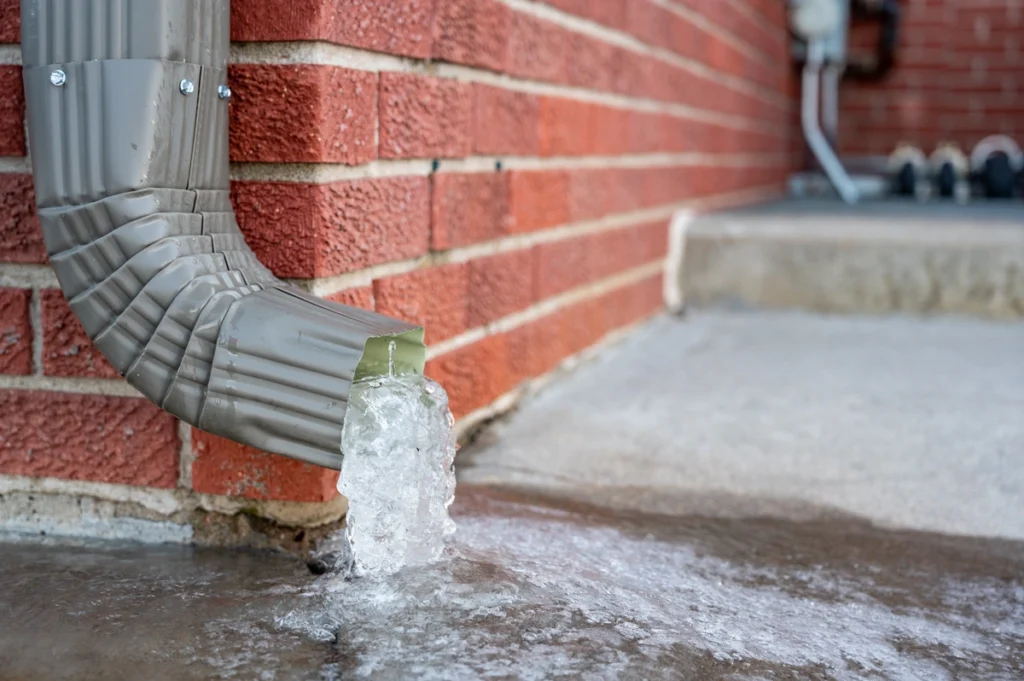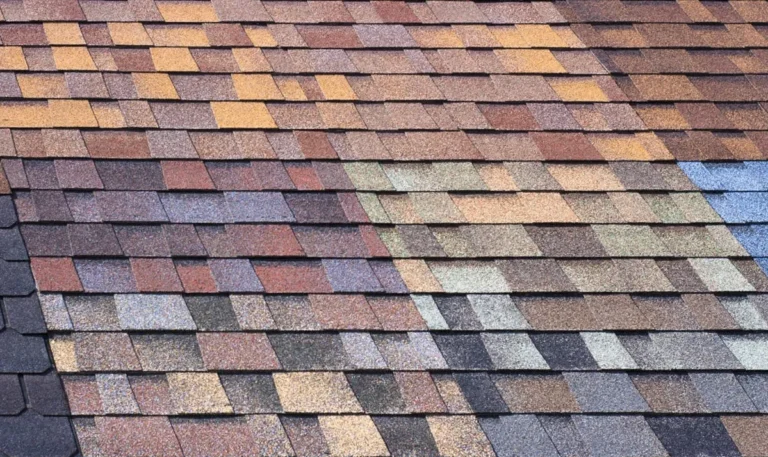When it comes to maintaining your home, cleaning your gutters often takes center stage. But what about those downspouts? They play a crucial role in guiding rainwater away from your house, and neglecting them can lead to a whole host of issues. That’s why we’ve got you covered with this homeowner’s guide to cleaning your downspouts like a real pro.
Inside this blog:
- 7 steps for how to clean your downspouts
- Indicators that your downspouts are clogged
Keep reading to become an expert on how to clean out your downspouts effectively!
Why Cleaning Downspouts Matters 🍂

Before we dive into the how-to, let’s briefly discuss why cleaning downspouts is essential:
- Water Diversion: Downspouts redirect rainwater away from your home’s foundation, preventing erosion and potential flooding.
- Preventing Clogs: Clogged downspouts can lead to overflowing gutters and water damage to your roof, siding, and foundation.
- Pest Deterrent: Stagnant water in clogged downspouts can attract pests like mosquitoes, birds, and rodents.
- Foundation Protection: Effective downspouts help maintain the integrity of your home’s foundation by preventing excess moisture buildup.
Now, let’s explore the 7 steps for cleaning your downspouts effectively:
1. Gather Your Tools
Before you dig into your gutter system and start cleaning your downspouts, make sure you have the necessary tools on hand:
- Gloves: Protect your hands from debris and potential sharp edges during the gutter cleaning.
- Ladder: Ensure you have a stable and secure ladder to access each gutter downspout.
- Garden Hose: You’ll need this to flush out debris and check for blockages.
- Downspout Snake or Auger: These specialized tools are designed for removing stubborn clogs.
2. Ensure Your Safety
Safety should always be your top priority when working on home maintenance tasks, just like cleaning out clogged gutter downspouts. So, below are some safety tips to keep in mind:
- Use a sturdy ladder: Ensure the ladder is on stable ground, and have someone hold it steady if possible.
- Wear gloves and eye protection: Protect yourself from sharp debris or potential splashes.
- Avoid overreaching: Move the ladder as needed rather than stretching too far.
- Use caution with downspout tools: Be gentle to avoid damaging the downspout or gutter.
3. Clear Debris from the Top
Start by removing any debris from the top of the downspout, near the gutter. Use your hands or a scoop to clear away leaves, twigs, and other blockages. Here are some tips for how to clean downspouts by removing debris.
- Work methodically: Begin at the top and work your way down the downspout.
- Use a gutter scoop: A specialized scoop can make this task more efficient.
4. Flush with Water
After clearing the surface debris, use a garden hose to flush water down the downspout. This will help ensure you get rid of any remaining debris.
Here’s how:
- Turn on the water: Use a gentle stream at first to avoid splashing.
- Observe the flow: Ensure water is flowing freely down the downspout.
- Increase the pressure: If you encounter resistance, slowly increase the water pressure to dislodge stubborn clogs.
5. Use a Downspout Snake or Auger
If you still encounter clogs after flushing with water, one of the best downspout cleaning tools to use is a downspout snake or auger.
Follow these steps:
- Insert the tool: Carefully insert the snake or auger into the downspout and twist it to break up the clog.
- Work gently: Avoid using excessive force, as this can damage the downspout or gutter.
- Flush with water again: After using the tool, flush the downspout with water to remove any loosened debris.
6. Inspect the Downspout
Once you’ve cleared the downspout, take a moment to inspect it for any signs of damage or wear:
- Check for dents or bends: Ensure the downspout is in good condition and not crimped.
- Look for leaks: Examine joints and connections for any signs of water leakage.
- Inspect for rust: If your downspout is metal, check for rust that may need addressing.
7. Reattach or Replace
If you had to disconnect any parts of the downspout during cleaning, be sure to reattach them securely. If you notice any significant damage or rust during your inspection, it may be time to consider replacing the downspout to ensure proper functionality.
💡Common Signs That Downspouts Need Cleaning 💡
Before we wrap up, here’s are common signs that indicate your downspouts may be in need of cleaning:
Overflowing gutters

Water spilling over the sides of your gutters during rain is a clear sign of clogs in the downspouts; however, this could also indicate an issue with your roof drainage system.
Gurgling sounds
If you hear gurgling or bubbling noises when it rains, it could indicate a blockage in the downspout.
Pooling water
Puddles or standing water near the foundation of your home may signal that downspouts aren’t properly diverting water.
Sagging gutters
Downspouts that are full or clogged can cause gutters to sag or pull away from your home.
Stains on siding or foundation
Water stains or damage to your home’s siding or foundation can result from downspout issues.
Keep Your Home in Top Shape With Clean Downspouts 🍃
Cleaning your downspouts is a vital part of home maintenance that should not be overlooked. By following these steps and keeping an eye out for signs of clogs, you can ensure that your downspouts effectively divert rainwater away from your home, protecting it from water damage and maintaining its structural integrity. So, grab your tools, put on your gloves, and get ready to keep your downspouts flowing freely!
Give us a call today and we’ll answer all your questions and ensure your home stays protected with top-notch craftsmanship. At Andes Roofing, you can expect nothing less than dedicated customer service from our expert team.






